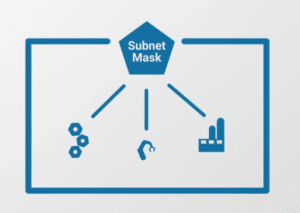Benjamin Franklin once said, “An ounce of prevention is worth a pound of cure.” It was the 1700s and he was speaking to Philadelphians about the importance of fire safety, but his words ring true today in a broad range of applications from healthcare to industrial network troubleshooting.
Industrial network outages can cost thousands, if not tens or hundreds of thousands, of dollars per hour. These outages result in lost product, revenue, and recovery time, while also risking capital investments in equipment exposed to the outage. Additionally, they create a high-stress environment for employees working to restore operations.
Outages are a known hazard in today’s connected plant. But that doesn’t mean they have to be disastrous. In previous installments of our OT Network Effectiveness (ONE) service series, we’ve explained the difference between industrial and enterprise networks and revealed the two most important decisions your organization can make when planning an industrial network. In this latest edition, Agilix Solutions Industrial Network Specialist Ted Davis walks through the three network components you can address today that will make troubleshooting much simpler and more efficient If you encounter an outage in the future.
IP Address Scheme
The IP address is the first component in industrial network design and is typically the first indicator in an outage of how difficult or simple it’s going to be to troubleshoot the issue. The IP address has all four of the goals of a reliable plant network in it:
- Reliability
- Scalability
- Maintainability
- Ability to secure traffic
At the broadest level of categorization, there are two different types of IP addresses: public and private. Follow the standards to lay out the private IP address scheme, as it’s the only IP address you should use in the plant environment.
 Simplifying Private IP Address Schemes
Simplifying Private IP Address Schemes
The easiest private IP address scheme to use and explain is the 10.0.0.0 address space. If you take for example, 10.10.10.10, each of those numbers tells you something specific. The first 10 says it’s a private IP address space. The second 10 communicates that we’re looking at Building 1 of the facility. The third 10 tells you that we’re looking at Line 1 in Building 1. The fourth 10 tells you we’re dealing with Machine 1 in Line 1 of Building 1. In a troubleshooting exercise, this makes it easy to correlate an IP address to a device and quickly identify if this is the issue.
Correlating IP Addresses and VLANs
The VLAN allows networking equipment to segregate ports that correspond to an IP address. We recommend setting the VLAN to match the IP address numbering scheme. For example, if the IP address is 10.30.10 (representing Building 3, Line 1), set the VLAN as either VLAN 31 or 310. This creates a direct correlation between the VLAN and the IP address. Simplifying this setup ensures a quick check during outages to confirm if there is an issue with IP addressing or VLAN assignment. If the configuration is correct, you can move on to the next step in troubleshooting.
A Consistent and Right-Sized Subnet Mask

IP Gateway Configuration
The IP gateway assigns the address that enables communication outside the process. It functions like a door to the room. You only define the IP gateway on devices that need external communication. This includes devices like an HMI, PLC, or internal server that shares data or downloads new recipes. The gateway controls which devices communicate externally and facilitates that communication. A properly configured IP gateway ensures only approved data enters or exits your industrial network. It also ensures that only authorized devices communicate outside the network. The IP gateway is the ideal location for an industrial firewall to secure a process.
Agilix is Your Partner in Industrial Network Design

Agilix ONE is here to help you take intentional and well-planned steps in the design and implementation of your industrial network. Reach out to your account manager today for Ted and his team to help you make your industrial network stand the test of time.


 Simplifying Private IP Address Schemes
Simplifying Private IP Address Schemes